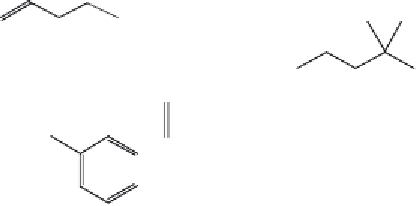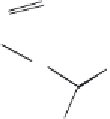Biomedical Engineering Reference
In-Depth Information
HN
O
O
O
CH
3
CH
3
HO
O
NHN
S
CH
3
S
NH
CH
3
O
O
CH
3
O
CH
3
O
O
O
O
S
OCH
3
HN
H
HO
OH
O
OCH
3
O
CH
2
CH
3
OCH
3
O
O
CH
3
HO
CH
3
N
OCH
3
OCH
3
OH
O
Figure 13.6
Schematic diagram of the antibody based product Mylotarg, with emphasis upon the toxin's
chemical structure. In reality three to fi ve molecules of toxin are attached to each antibody molecule
also incorporates ultrafi ltration and low-pH incubation steps designed to remove/inactivate any
virus potentially present. The cytotoxic antibiotic is obtained separately via fermentation of its
producer microrganism,
Micromonospora echinospora
sp.
calichensis
. Direct chemical linkage
of antibiotic to antibody is achieved using a bifunctional linker.
Mylotarg administration results in congregation of the antibody-toxin conjugate on the sur-
face of (CD33 positive) leukaemic cells. Binding triggers internalization of the conjugate. Lyso-
somal degradation ensues, but a signifi cant proportion of the intact antibiotic escapes and induces
its cytotoxic affect by binding DNA in its minor groove. This, in turn, induces double-strand
breakage.
Mylotarg (like most other drugs) does induce some side effects, the most signifi cant of which
is immunosuppression. This is induced because certain additional (non-cancerous) white blood
cell precursors also display the CD33 antigen on their surface. The immunosuppressive effect is
reversed upon termination of treatment, as pluripotent haematopoietic stem cells (Chapter 10) are
unaffected by the product.
13.3.3.2
Drug-based tumour immunotherapy
In addition to tumour-selective delivery of toxins and radioisotopes, antibodies may also be used
to mediate tumour-targeted drug delivery. At its simplest, this involves conjugation of a chemo-
therapeutic drug to a tumour-specifi c antibody. Therapeutic drugs used include adriamycin, ami-
nopterin, methotrexate and vinca alkaloids. This direct approach to tumour drug delivery has met
with some success, mainly in animal studies. However, a limited number of drug molecules can be
conjugated to each antibody molecule, thus somewhat limiting the drug delivery load.
An alternative approach is the use of a tumour-specifi c antibody to which a prodrug activat-
ing enzyme has been attached. Therapeutically inactive prodrugs could be administered by,





















































Search WWH ::

Custom Search